CALIFORNIA
 |
| www.pdclipart.org |
The next installment in our summer series takes us to "The Golden State" of California (postal abbreviation: CA). This is the third largest state in the Union and the most populated. California is full of fascinating history and equally fascinating people. The geography is diverse, and the land is some of the richest in the U.S. in more ways than one.
The name, California, was taken from a Spanish romance novel published in 1510 in which Queen Califia ruled an imaginary island. The first to set foot on this land thought they had found this island. Spanish missionaries arrived in the 1700s and began setting up missions, many of which can be visited today. After the Mexican-American War, California became a territory of the U.S. Gold was discovered in 1848 on John Sutter's land by James Marshall. When the rest of the country heard this news, the population went from 14,000 to 250,000 in just four years. On September 9, 1850, California became the 31st state, later adopting the motto, "Eureka," meaning "I have found it!"
The state flag is known as the "Bear Flag" and was first used in 1846 but was not officially adopted until 1911. The state animal, the California Grizzly Bear, can be seen on it along with a red star. For more information about the flag's history, visit The Bear Flag Museum. Unfortunately, there are no more grizzly bears in California.
 |
| www.pdclipart.org |
Not surprising, the state mineral is gold. (What other state have we done has gold as the state mineral?) The California Valley Quail is the state bird, and the reptile is the Desert tortoise. The state flower is the Golden Poppy, helping to contribute to the state nickname (The Golden State), and the Redwood is the state tree. This is the largest tree, growing up to 370 feet tall and potentially living more than 1000 years. Its roots are shallow, spreading sideways instead of downwards up to 250 feet away from the trunk. The bark of the Redwood can be as thick as one foot.
 |
| www.pdclipart.org |
Living in Sequoia National Park is the "largest living thing on the earth," an approximately 2000-year-old Sequoia with a trunk circumference of 102 feet. Speaking of growing things, there are over 200 different crops produced in California, which makes it the top agricultural producer in the U.S. Some things are only found here and in no other state such as apricots, kiwi, olives, and pistachios. California also grows more than 300,000 tons of grapes (which make over 17 millions gallons of wine each year), almonds, strawberries, oranges (second only to Florida), avocados, lemons, peaches, prunes, lettuce, tomatoes, broccoli, and carrots. (Do you like any of these foods?) California is the second largest producer of livestock in the U.S. (Which state is #1?) The top product mined in CA is oil, and all of the boron in the U.S. is found here. (What are some uses for boron?)
The capital of California is Sacramento. It means "holy sacrament" in Spanish. The city took the name of a nearby river which was then changed to Feather River. The city was incorporated in 1850. In 1854, after paying $1 million for the honor, it became the capital. Some other cities of interest are San Diego, San Francisco, Los Angeles, Fresno, Santa Cruz, Lake Tahoe, Beverly Hills, Malibu, Modesto, Monterey, Napa, Oakland, San Jose, Simi Valley, Pasadena, to name a few.
There are hundreds of tourist destinations for any type of vacation, be it a relaxing beach vacation or camping in the wilderness, taking a historical tour or visiting museums and aquariums. California is home to places like Hollywood, Disneyland, Yosemite National Park, Alcatraz, the Golden Gate Bridge, Universal Studios Hollywood, California State Railroad Museum, Sutter's Fort, Santa Monica Pier, and Chinatown. There are also two extremes here. Mt. Whitney is the highest point in the 48 contiguous states, rising to a height of 14,495 feet. Death Valley is the lowest point in the United States - 282 feet below sea level. It is also the hottest and driest place in the U.S.
One of the most significant events that occurred in California's history was the Great San Francisco Earthquake on April 18, 1906. At 5:12 a.m. the first rumblings began along a 296-mile rupture of the San Andreas Fault that resulted in a quake reaching a magnitude of 7.7 to 8.3 on the Richter Scale. A very large fire followed. Early estimates said that 700-800 people had died, but studies years later raised that number to greater than 3000. More than 200,000 residents were homeless as 28,000 buildings were destroyed, most of them being made of wood. By 1906 dollar value, there was an estimated $4 million dollars in damage.
Just as varied as the geography and the attractions and as numerous as the cities are the people of California. Hundreds upon hundreds of famous people, from athletes to writers to actors, call Cali home, so I will mention just a few who were born there.
Richard Nixon, 37th President Ansel Adams, photographer
Jack Black, actor Robert Frost, poet
Shirley Temple Black, actress & ambassador Steve Jobs
Jack London, author George Patton, general
Tony Hawk, professional skateboarder Sally Ride, astronaut
John Steinbeck, author Jeff Gordon, race car driver
Shaun White, professional skateboarder & snowboarder, Olympic gold medalist
George Lucas, director famous for Star Wars, Indiana Jones, and Jurassic Park
Melissa Gilbert, played Laura Ingalls in "Little House on the Prairie"
Jimmy Doolittle, led raid on several Japanese cities after bombing of Pearl Harbor
Check out http://capitolmuseum.ca.gov/kids/kids_home_flash.html for some fun kids' activities all about California.
Here are some resources from Christianbook.com:
 |
California Early History By Golden Education Center Who were the 49ers? What happened in California Missions? What's the state mineral? Find out with this fun collection of California activities, maps, research projects, and early history fact sheets. With information on the Native Americans, Mexicans, Africans, Asians and "East Coasters" who lived in the state, this early history guide provides a wide, yet detailed, overview of the history of California. Map activities, review questions, vocabulary lessons, coloring, and word puzzles are included. 90 reproducible, perforated pages, softcover. Answers included. |
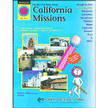 |
The Best Ever Book About California Missions By Golden Education Center This is a simplified, yet complete, resource book detailing each of the 21 Spanish (Catholic) Missions established along El Camino Real. The book begins with a 14-page historical background section that explains the secular, military, and religious attitudes and situations of Spain and Mexico which were instrumental in the history of California. New vocabulary words, maps, pictures, review questions, and Bonus Activities (research questions) are included in these sections, as well as each of the individual mission sections. Each individual mission section includes a diagram of the mission layouts, a fact sheet explaining the mission's design and compound, two-four pages detailing the historical founding of the mission through secularization, a puzzle (crossword, word search, etc.) relating to the respective mission, and one page about the mission today. Pictures, diagrams, and maps are included in each section. Review questions and bonus (research) activities follow each section. This book also has a section of Extras:
|
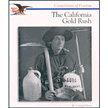 |
The California Gold Rush By R. Conrad Stein / Grolier Publishing Company Within this book you will find some of the most important things that happened in history as well as some of the houses and buildings that are historic. This is a great book for middle school students as well as high school students. |
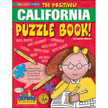 |
The Positively California Puzzle Book By Carole Marsh / Gallopade International |
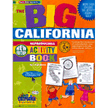 |
California Big Activity Book, Grades K-5 By Gallopade International This BIG activity book has a wide range of reproducible activities that will entice any child to learn more about their state! Activities touch on history, geography, people, places, fictional characters, animals, holidays, festivals, legends, lore and much, much more! Reproducible. Available for all 50 states! Grades K-5; ages 6-12. |
![22301DF: California State History Lapbook - PDF Download [Download] 22301DF: California State History Lapbook - PDF Download [Download]](http://ag.christianbook.com/g/thumbnail/2/22301dft.gif) |
California State History Lapbook - PDF Download [Download] By Cyndi Kinney & Judy Trout / Knowledge Box Central Get to know your home state! Comprehensive state history lapbook resources from Knowledge Box Central are designed so that children of all ages can study together. Explore state symbols, songs and landmarks, famous people, geographical regions, timelines of historical events, and more. The included state-specific study guide provides background information, history, and other factual information; this study guide is the same for both lapbook (Grades K-8) and lapbook journal (Grades 6-12) students, so that the parent only needs to go over the information once. This lapbook includes a list of all the supplies needed if following the included base guide. Blackline masters are provided for students to cut out and paste into their lapbook, while a photo of a finished lapbook provides a visual example. This Lapbook is structured for use with K-8th Grade Students. Get started on your lapbook immediately with this PDF Download. |
 |
What Was the Gold Rush? By Joan Holub & Tim Tomkinson(Illustrator) / Grosset & Dunlap Did you know that people from all over the country poured into California to mine for gold or that gold is one of the most bendable, poundable metals? Discover all this and more in What Was the Gold Rush? Featuring fun facts, illustrations, and 16 pages of photographs, you'll discover the importance that the Gold Rush had on the development of the western United States. |
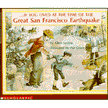 |
If You Lived at the Time of the Great San Francisco Earthquake By Scholastic Trade On April 18, 1906, a big earthquake hit the city of San Francisco. What would you have done when the quake struck? What things in your house would you try to save? How would you carry the things you saved? Where would you live if your house was destroyed? This book takes you to San Francisco, California, shortly before, during, and after April 18, 1906. |